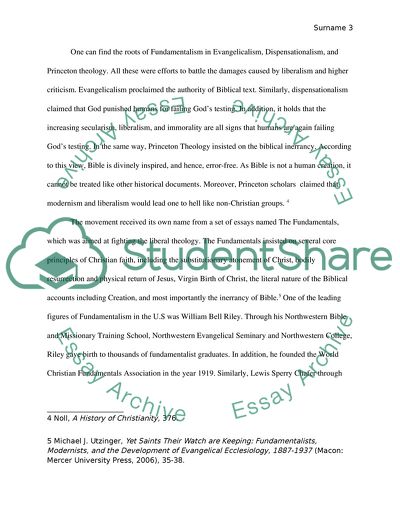Cite this document
(The Rise of Fundamentalism Coursework Example | Topics and Well Written Essays - 1250 words, n.d.)
The Rise of Fundamentalism Coursework Example | Topics and Well Written Essays - 1250 words. https://studentshare.org/religion-and-theology/1821218-the-rise-of-fundamentalism-late-1800s-and-early-1900s
The Rise of Fundamentalism Coursework Example | Topics and Well Written Essays - 1250 words. https://studentshare.org/religion-and-theology/1821218-the-rise-of-fundamentalism-late-1800s-and-early-1900s
(The Rise of Fundamentalism Coursework Example | Topics and Well Written Essays - 1250 Words)
The Rise of Fundamentalism Coursework Example | Topics and Well Written Essays - 1250 Words. https://studentshare.org/religion-and-theology/1821218-the-rise-of-fundamentalism-late-1800s-and-early-1900s.
The Rise of Fundamentalism Coursework Example | Topics and Well Written Essays - 1250 Words. https://studentshare.org/religion-and-theology/1821218-the-rise-of-fundamentalism-late-1800s-and-early-1900s.
“The Rise of Fundamentalism Coursework Example | Topics and Well Written Essays - 1250 Words”. https://studentshare.org/religion-and-theology/1821218-the-rise-of-fundamentalism-late-1800s-and-early-1900s.


